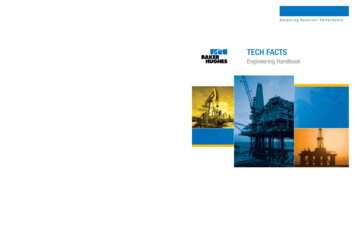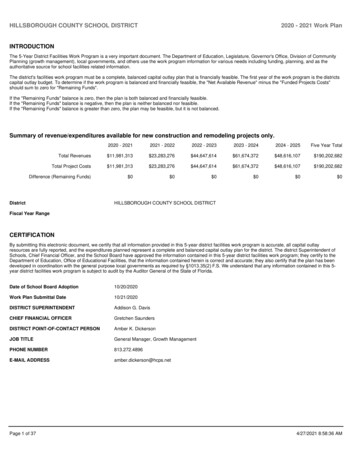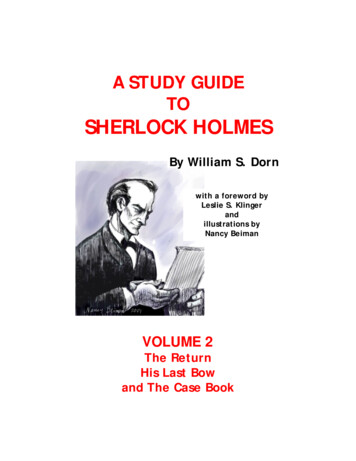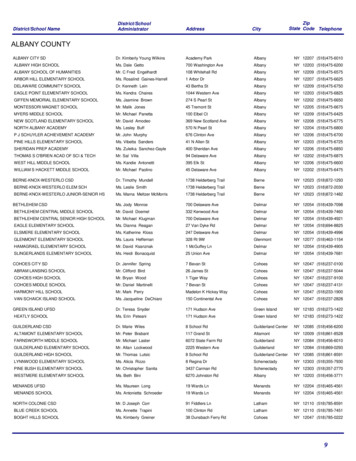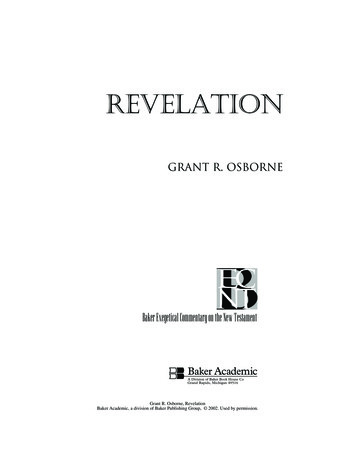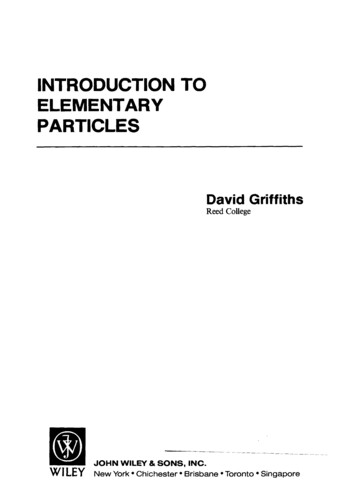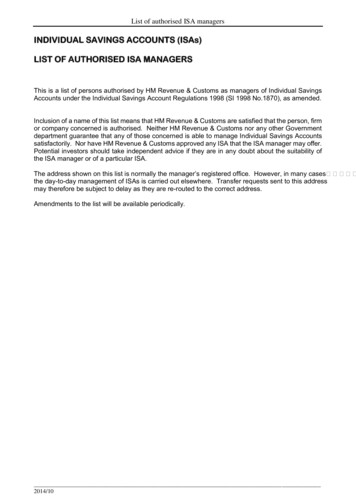
Transcription
Baker Street ElementaryPresents“The Life and Times in Victorian London”
Baker Street ElementaryThe Life and Times in Victorian London# 058 –- Shedding Some Light on the Subject –- February, 2022
Copyright 2022, Sherwood-Fabre, Fay, Mason, MasonWelcome to topic # 058 Today, Master Gregson and Iwill be discussing the use ofgas during the Victorian era
In numerous Sherlock Holmes’stories, gaslight and gaslamps provide illumination ondarkened streets and houses.
In “The Adventure of the BlueCarbuncle,” tallow stains indicateHenry Baker has no gas in his houseand still uses candles.
By the time Sir Henry Baskerville inherits his title inThe Hound of the Baskervilles, he proposes installingelectric lights to brighten his inheritance, with aspecial Swan and Edison bulb at the front.
This shift from gaslights to electric onesreflects an historical competition between twoforms of illumination, complete with patent warsand races to spread into new markets.
While coal gas hadbeen known to provideboth heat and light,William Murdoch
was the first to installpipes to carry the gas andlight lamps throughout hishouse in 1792 in Cornwall.
A natural gas, coal gas was manufactured byheating coal in a sealed oven to keep out theoxygen, filtering it for purification, pressurizingit, and piping to a fixture where it was ignited.
Additional experimentation and pipe-laying ledto the first industrial use of gaslights insidethe Soho Foundry where he worked in 1798and the outside of the building in 1802.
Prior to these efforts, street lighting cameinto London (and from there to other cities)in the 1600s when certain householders,(those in more fashionable areas
and, later, shopkeepers) were requiredto hang a lantern outside their house,usually an oil lamp, to allow pedestrianssome light after dusk.
The roadways,however, remaineddark.
The brighter and more efficientgaslight, however, made greatheadway in 1807 when Pall Mall inLondon received the first streetlamps.
Paris followed in 1820.
These lamps were on posts and had to belit by hand each night by a lamplighterwho opened a valve to let out just enoughgas to be ignited and avoid an explosion.
With pipes laid for street lighting,they could easily be extended toresidences and businesses, ending thereliance on candles and oil lamps
and often becoming thefirst utility to be contracted(with water and sewers oftenarriving much later).
Despite the improvement overcandles and oil lamps, the inventionof incandescent electric lamp proveda powerful competitor to gaslights.
A number of inventors, including St.George Lane-Fox and Joseph Swanin England; Moses Farmer, WilliamSawyer, Albon Man, Hiram Maxim
and Thomas Edison in the US; andCarl Auer von Welsbach in Austriaall worked on better and morebrilliant light bulbs.
Swan patented several of his lamps, resultingin a lawsuit against Edison and ending in amerger (the Edison and Swan United Companyreferred to in The Hound of the Baskervilles).
While gaslights had a head start, electriclighting offered some advantages toconsumers: gas pressure was not alwaysreliable and explosions and fires did occur.
In addition, each lighthad to be separatelylit by hand.
Another drawback with gaslightswas spotty quality pressure,making it a more dangerous andless reliable service.
Edison was quick to exploit anynews of problems or dangers ashe worked to promote his ownelectrical power grid and lights.
For about twenty years, manybuildings had dual-fuel fixtures(gas and electric) until electricityfinally won out
because when William Coolidgedeveloped a much brightertungsten-filament lamp, farsuperior to gaslight.
Gaslights have been identified as aninstrument of both economicdevelopment and social control.
Streetlamps reduced the darknessneeded for criminal activity,allowing for more commerce duringthe evening hours.
While reducing one illegalpursuit, gaslights becameassociated with anothermalicious endeavor.
The term "gaslighting" refers toan abuser who manipulates thetruth, making the victimquestion his/her own sanity.
It originated from a play, and later amovie, where a husband lowered andraised the gaslights in his house to makehis wife believe she was seeing things.
Despite the rise of electric lights, gaslights have notbeen completely eliminated. London still has 1,500work gas-lamps, although they no longer require alamp lighter, having switched to electric timers.
Other places, including somehistoric homes, have alsocontinued to light areas with gasbecause of its nostalgic effect.
Such lamps providedopportunities to cast light oncrimes and criminals, such asthe ruffians
that attacked Henry Baker,that might have not have beendiscovered until theperpetrators had long vanished.
So we have completedtopic # 058 in ourseries
References for this -londongas-lamps/9) https://en.wikipedia.org/wiki/Gas lighting
Baker Street Elementary“The Life and Times in Victorian London”IS CREATED THROUGH THE INGENUITY & HARD WORK OF:JOE FAYLIESE SHERWOOD-FABRERUSTY MASON&STEVE MASON
brilliant light bulbs. Swan patented several of his lamps, resulting in a lawsuit against Edison and ending in a merger (the Edison and Swan United Company referred to in The Hound of the Baskervilles). While gaslights had a head start, electric lighting offered some advantages to
